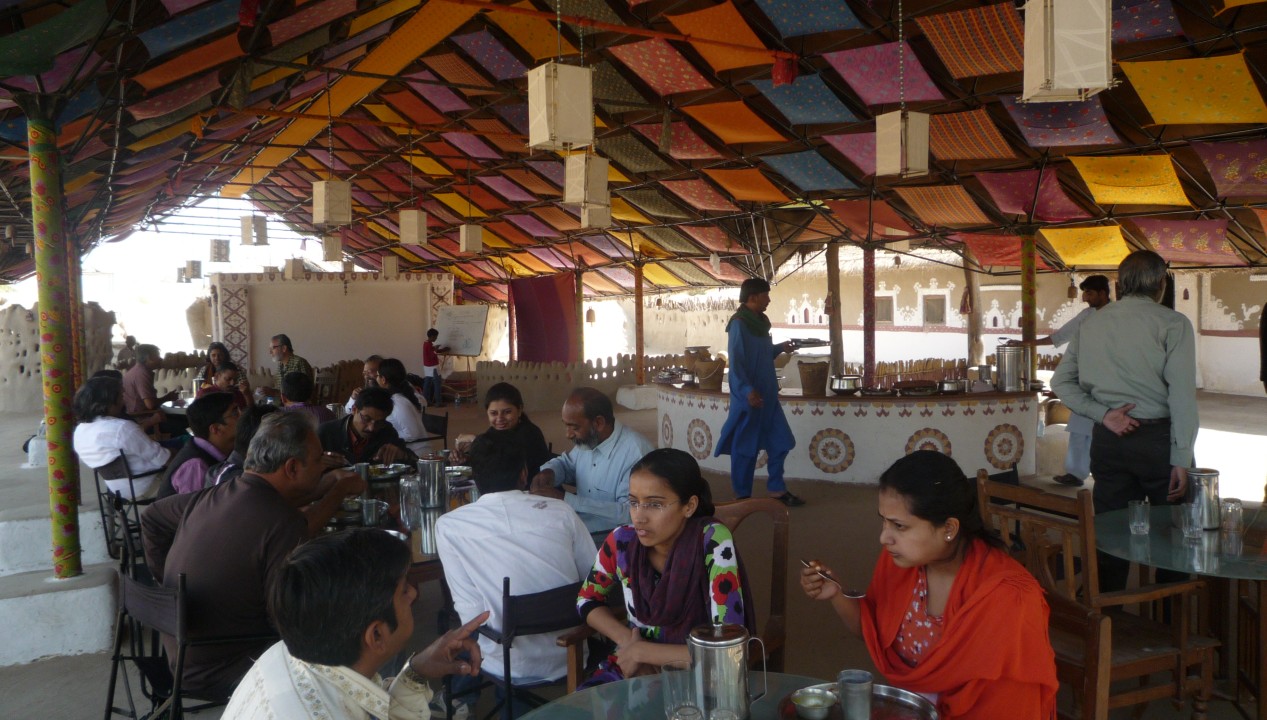Tell us about some important projects that your studio was involved in just before the lockdown.
Some of our active projects during the lockdown were Organic Dairy Farm in Chennai, an environment-friendly low-cost tourist cottage in Pondicherry, Hut made of earth from the site, locally sourced stone and bamboo pillar construction with the help of volunteers. Conducting hands-on workshops for architecture students of VIT University in using earth as a construction material was also accompanying the main tray of projects.
Which were the biggest challenges and fears you faced because of the lockdown?
We faced communication amongst colleagues as a major issue alongside concerns of translation of drawings and details to the site and organising the workflow within the team. We also faced challenges in collecting payments from our clients and in turn managing and servicing our office infrastructure. Keeping colleagues inspired and trying to make sure working from home is productive and fun, was the internal challenge we faced amongst our team
What were the challenges you faced with the monetary flow in your practice and how are you handling them?
With regards to on-site supply, we experienced our orders placed on materials and vendors getting withheld. Delivery of materials already paid for was also being withheld from reaching our sites. Communicating with vendors seemed hindered and it was difficult to make sure the quality of the materials are not compromised during storage. It’s a chain reaction ultimately delaying the course of the project and flow of work. Taking responsibility and commitment on behalf of the client in a few instances was also not possible. We eventually managed to keep our monetary resources active from personal savings and reduced the salaries of our team to 20% initially. Later it was brought down to 40% after a few months into the lockdown.
How are you strategizing to adapt to the new conditions of work upon resumption of office post the lockdowns?
Conducting virtual meetings with colleagues and coordinating work at the site via video calls had become the norm for us too. We made checklists, split the work and prioritized them based on projects directly affected during the lockdown, to bring efficiency to these newer methods of handling work in the lockdown. Since our travel time was lessened due to the lockdowns, we use technology as the only option to get things done.
Were any new methods of work evolved during the lockdown?
In the virtual formats, group digital meetings, webinar participation, online library research were the new modes of work we witnessed evolve in our studio.
Besides, creating a portfolio and archiving previous works is another area we focussed on during the lockdown which unearthed new methods of operation.
Learning new software tools related to our practice and for general interest were also ideas we occupied ourselves with. Most importantly, being connected and sharing information within ourselves to stay informed was never stopped.
How were the coordination issues resolved with the studio staff and on-site team?
Work was prioritized and adherence to personal responsibility and commitment on the task given was monitored, reported and reviewed.
What were the biggest learnings from the pandemic? And which decisions and new work methods you feel your studio will continue with for the future?
Since we were all locked-down, we rediscovered that travelling whenever possible is very important. We also realize that enjoying the free time we get by engaging in art or something productive is always important.
Trying to pick up new hobbies, enjoying the time together in the office and making work more interactive and sharing is crucial for a healthy and positive atmosphere.
We have had the chance to spend time with our family and our pets.
Please share a few words about any construction approval processes being influenced by the lockdown. How have the development authorities responded to you and did they share any instructions regarding the approval processes?
Approval processes have gone digital and less in person. It has cut down a lot of the cumbersome travel and printing costs. Authorities have responded and sanctioned as quickly as possible during this period. The authorities have been very supportive.
Are you involved in any off-studio/allied initiatives such as office collaborations, NGO and social projects, working with authorities, photography, writing, research, conservation, etc.? How were these initiatives influenced by the lockdown, and how are you handling them?
Yes, few photos of the city were documented during the lockdown on personal interest. And post lockdown we have collaborated as well on a project to share the knowledge and experience of the workforce.
About The Practice :
Please let us know about the founding year, principals, team and studio.
Art and Architecture were founded in September 2013, by its principal architect Chamraj Suresh Babu. The team consists of architects Harshini, Aravind, Sharmi, Vanitha, Sabharish, Deepak, Amaresh, Karthik, Bhagavathi, Pavitra and Atiti, with their principal Chamraj. The studio is located in Chennai, Tamil Nadu.
Chamraj Suresh Babu is a Chennai Based Architect with post-graduation in Landscape architecture. Being an architect has allowed him to be part of the environment through his work which he enjoys. Chamraj holds Inspiration from the works of architects like Geoffrey Bawa, Vo Trong Nghia, BIG, Marcio Kogan and a lot of Indian architects. Chamraj believes in making his clients excited through architecture and helps him draw happiness from the process. He also believes in the challenges his work provides him to grow interpersonally and professionally.
What are some of the processes and work methods unique to your practice?
We try to focus on the design process rather than the output. We also want to keep things simplified and would like to engage in interesting ways of design development such as bubble diagrams, sketching, photographing and modelmaking and more.








One Response
Feeling proud to be a part in this wonderful firm sry Family